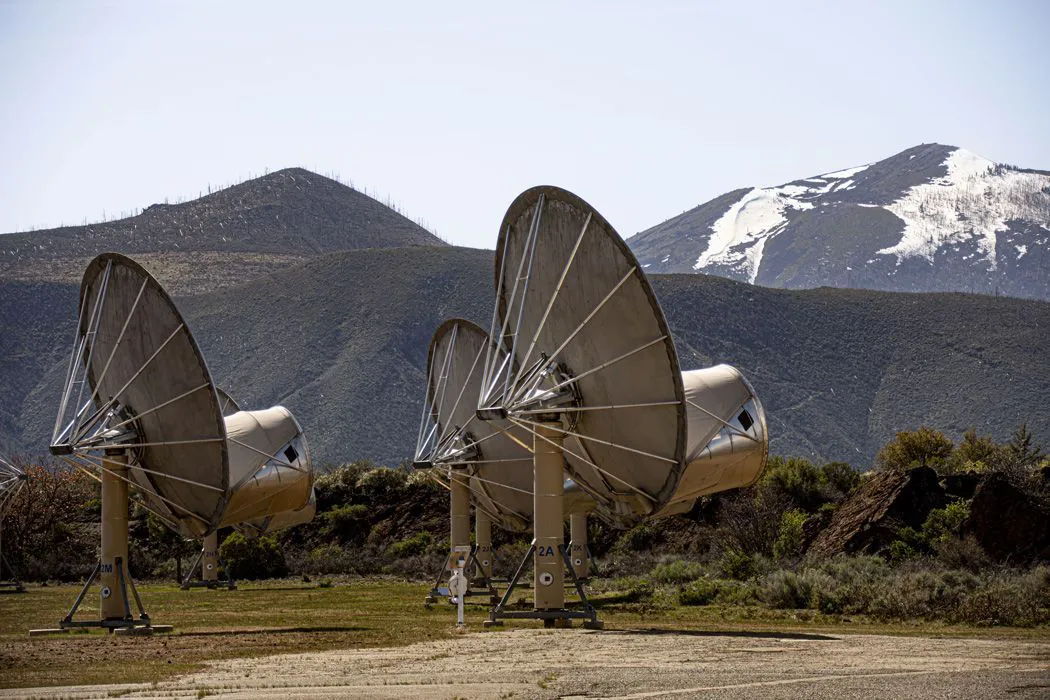NASA held a briefing following the release of a report on the study of UFOs, or 'Unidentified Anomalous Phenomena' (UAP) on 14 September 2023.
The briefing took place at 10:00 EDT (14:00 UTC or 15:00 BST).
The agency announced on 21 October 2022 that it would set up an independent study to address reports of objects seen in the sky that cannot be easily or definitively identified.
Rather than studying historic reports of UAP, the team was tasked with identifying how data might be collected in future.
You can read the full report here (PDF)
Things commonly mistaken for UFOs

The study saw 16 individuals conducting research over a period of 9 months.
They looked at how data gathered by civilian government bodies, commercial data and other sources might be analysed in future to conduct scientific studies on reports of strange objects in the skies.
The study was conducted under the banner of national security and air safety, but also as part of NASA's remit to explore the possibility of life beyond Earth.
The latter is undertaken in many other ways including the search for signs of biosignatures on exoplanets.
Why UAP, not UFO?
Stories of strange objects in the sky are nothing new.
From the Roswell UFO incident to Zeta Reticuli and Barney and Betty Hill, 'UFO' lore is part of our popular culture.
In recent years, videos have surfaced captured by the US Navy, apparently showing objects in the sky that some say are manoeuvring in ways beyond current technological capabilities.
This has led some to question whether the US has uncovered secret technology developed by another nation state.
And some observers have claimed these phenomena are spacecraft flown by an extra-terrestrial species.
Critics argue that there is not enough data contained within the videos and eyewitness reports to empirically draw any conclusions.
On 26 July 2023 the US congress held a hearing on UFOs, or UAPs, to the surprise of much of the world.
Some agencies like NASA are now beginning to compile data on such phenomena, or reports of such phenomena, given US public interest in the subject.
But because of the baggage surrounding a term like 'UFO' and its proliferation throughout popular culture over the decades, the term 'UAP' has been adopted.
This is most likely as a means to disassociate future studies of unidentified objects in the sky from negative connotations surrounding the term 'UFO'.
And while initially 'UAP' meant 'Unidentified Aerial Phenomena', instead the term 'Unidentified Anomalous Phenomena' has been adopted.

What to expect from NASA's UAP report
"A full report will be released to the public in conjunction with NASA’s principles of openness, transparency, and scientific integrity," a statement from NASA said, prior to the report's release.
Following the release of the report, NASA held a public briefing to discuss the findings, which you can watch at the bottom of this page.
"NASA is going in with an open mind and we expect to find that explanations will apply to some events and different explanations will apply to others," the agency said.
"We will not underestimate what the natural world contains, and we believe there is a lot to learn. Data is the language of scientists, so we are excited to see what the independent study team discovers."
However, the agency also said "NASA has not found any credible evidence of extraterrestrial life and there is no evidence that UAPs are extraterrestrial.
"However, NASA is exploring the Solar System and beyond to help us answer fundamental questions, including whether we are alone in the Universe."

Who conducted NASA's Unidentified Anomalous Phenomena Study?
The 16 members of the NASA UAP Study are:
- David Spergel, president of the Simons Foundation
- Anamaria Berea, associate professor of Computational and Data Science at George Mason University in Fairfax, Virginia
- Federica Bianco, joint professor at the University of Delaware in the Department of Physics and Astrophysics
- Paula Bontempi, a biological oceanographer
- Reggie Brothers, operating partner at AE Industrial Partners in Boca Raton, Florida
- Jen Buss, CEO of the Potomac Institute of Policy Studies in Arlington, Virginia
- Nadia Drake, freelance science journalist and contributing writer at National Geographic
- Mike Gold, executive vice president of Civil Space and External Affairs at Redwire in Jacksonville, Florida
- David Grinspoon, senior scientist at the Planetary Science Institute in Tuscon, Arizona
- Scott Kelly, former NASA astronaut, test pilot, fighter pilot and retired U.S. Navy captain
- Matt Mountain, president of The Association of Universities for Research and Astronomy, known as AURA
- Warren Randolph, deputy executive director of the Federal Aviation Administration’s Accident Investigation and Prevention for Aviation Safety department
- Walter Scott, executive vice president and chief technology officer of Maxar in Westminster, Colorado
- Joshua Semeter, professor of electrical and computer engineering and director of the Center for Space Physics at Boston University
- Karlin Toner, acting executive director of the FAA’s Office of Aviation Policy and Plans
- Shelley Wright, associate professor of physics at the University of California, San Diego’s Center for Astrophysics and Space Studies
How to watch NASA's UAP briefing
Watch the briefing via NASA's YouTube channel below

